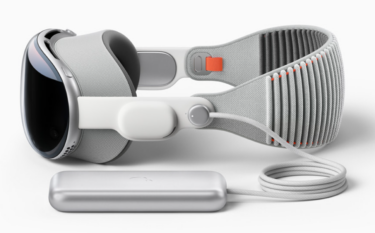Apple Vision Pro: Production problems and VR controller rejection

Apple is said to be cutting back on production because of problems with the technology. The end also seems to be in sight for the VR controllers.
According to media reports, Apple has significantly reduced the planned quantities for the Apple Vision Pro. Due to the complex design, there are technical difficulties in the production. It also seems that the headset will not support VR controllers in any way.
Less than 400,000 units planned by 2024
According to a report in the Financial Times, Apple originally planned to sell one million units in the first year after the headset's launch.
However, Chinese contract manufacturer Luxshare is now preparing to produce fewer than 400,000 units by 2024. In addition, two exclusive suppliers of certain components reported that Apple had only ordered enough parts for 130,000 to 150,000 units in the first year.
Earlier, there were reports that the very limited number of units of the Apple Vision Pro might have to do with capacity limitations on the part of Sony.
The maker of the PlayStation VR 2, along with TSMC, supplied the micro-OLED panels used by Apple in its prototypes. The production of these displays is very difficult and expensive. Apple is said to be dissatisfied with the productivity of its suppliers. Too few flawless displays are being produced.
Apple Vision Pro: End of controller hopes
The Apple Vision Pro will only be controlled via eye tracking, hand tracking and voice. VR controllers, such as those used in the recently announced Meta Quest 3, will not be available. This is the final plan according to Apple expert Mark Gurman.
Apple doesn't want to make its own controllers – either VR or gaming controllers – and won't support third-party VR controllers. According to Gurman, Apple tested devices from HTC and others, but decided on the "more elegant solution" without accessories.
Only certain Bluetooth keyboards for text input in the Vision Pro and gaming controllers from Sony's PlayStation and Microsoft's Xbox consoles are supported.
Note: Links to online stores in articles can be so-called affiliate links. If you buy through this link, MIXED receives a commission from the provider. For you the price does not change.